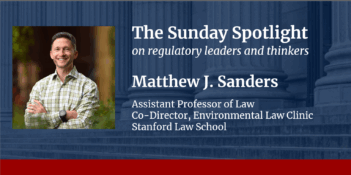
Two prominent economists introduce new questions into the debate over the social cost of carbon.
Should federal policymakers in the United States take into consideration the global benefits of U.S. climate change regulations? Most evaluations of national environmental policies weigh just the costs and benefits to the U.S. economy, but the benefits from climate regulation accrue on an international scale.
Deciding whether to include global climate benefits in domestic regulatory analyses deserves careful scrutiny, according to a recent working paper by Ted Gayer of the Brookings Institution and W. Kip Viscusi of Vanderbilt University. They argue that “imposing a global perspective on benefits will increase the apparent desirability of the policy but will overstate the actual benefits to the American people.”
According to Gayer and Viscusi, U.S. agencies have little justification to include benefits to the global population when analyzing federal regulations. The authors explain that usually the people considered in any regulatory analysis are the citizens of the same political jurisdiction that will bear the cost of the policy.
When a state considers a policy to reduce pollution, the state will weigh the costs and benefits to its residents in determining the optimal level of the pollution reduction. While state residents will pay all of the costs of the policy, they will receive only a fraction of the total benefits because the policy will also benefit people in neighboring states who do not pay for the policy. When costs and benefits are compared considering only state residents, the optimal level of pollution reduction will be less than when benefits to residents of neighboring states are considered.
In this situation, the federal government can provide incentives to encourage the state to set a level of pollution reduction that is optimal for all U.S. residents. However, according to Gayer and Viscusi, no international mechanism exists to encourage providing a public good beyond the nationally optimal level.
The authors explain the standard practice of U.S. policymakers to limit the scope of analysis to U.S. citizens. Language in Executive Order 12866 and guidance from the Office of Management and Budget, along with language in the Toxic Substances Control Act, the Clean Water Act, and the Clean Air Act, all demonstrate U.S. policy choices to limit the scope of cost-benefit analysis to Americans, according to Gayer and Viscusi.
While the authors acknowledge that the Clean Air Act provides for some consideration of foreign interests, they contend that the law does not require that agencies treat interests outside the U.S. the same as those inside the nation. In addition, they argue that “the applicability of this provision is very limited to situations in which other nations provide reciprocity to the U.S.” They conclude that, unless all countries provide the U.S. with reciprocity, the Clean Air Act cannot justify inclusion of global climate benefits in decision-making about domestic environmental policy.
An interagency working group came to the opposite conclusion in a 2010 report on the social cost of carbon (SCC). The report found that measuring the SCC on a global scale is permissible. The working group stated that employing a global SCC to estimate climate benefits “does not give extraterritorial effect to federal law.”
According to Gayer and Viscusi, the “issue is not whether it violates the law to consider benefits to the world, but rather whether it is appropriate from a policy standpoint to do so.”
While domestic climate benefits are estimated to be between seven and 23 percent of global climate benefits, Gayer and Viscusi note that agencies have relied on global climate benefits to justify costly regulations to reduce greenhouse gases (GHGs). “If one were to focus on the domestic benefits rather than the worldwide benefits,” they write, “the GHG benefit component would sometimes be extremely small.” Specficially, Gayer and Viscusi report that the use of global benefits “serves to inflate the level of estimated benefits by a factor of 4.4 to 14.3.”
According to Gayer and Viscusi, one possible rationale for considering global benefits in U.S. policies stems from the fact that GHGs produced in the U.S. are felt worldwide and that international cooperation is needed to meaningfully reduce impacts of GHGs. However, they find this rationale problematic absent explicit reciprocity by other countries.
Gayer and Viscusi suggest that altruism might provide the best, at least partial, justification for calculating global benefits. Yet even this rationale does not hold up to their scrutiny. Without firm guidance on the scope of cost-benefit accounting, Gayer and Viscusi assert, agencies will have “an incentive to engage in cherry picking” including global benefits when it helps their case and ignoring them when it does not.



